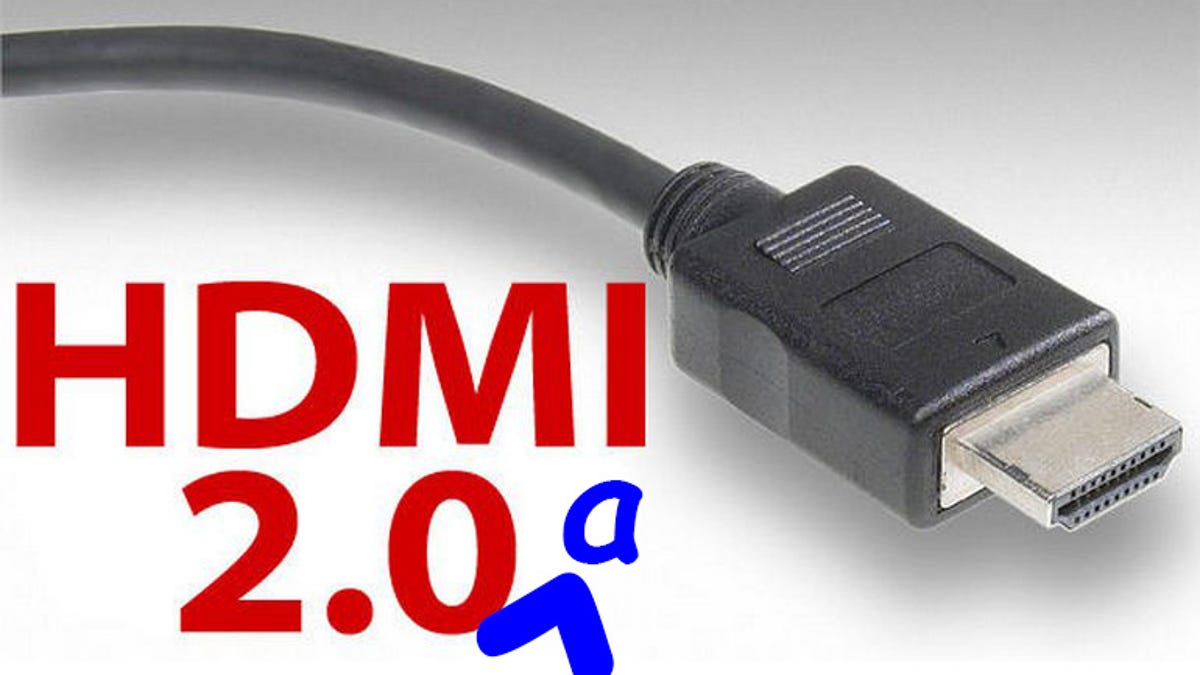What is HDMI 2.0a?
HDMI Licensing has announced the latest update to the HDMI spec, called HDMI 2.0a. It governs the transmission of new High Dynamic Range content between HDR-compatible source devices and TVs. Here's what you need to know.

Update 1/2017: There's been an update that supersedes this one, it's called HDMI 2.1.
HDMI 2.0a is the latest version of the beloved/despised spec that regulates those ubiquitous cables, inputs and outputs that connect pretty much everything in your home entertainment center. It's a minor update, but a potentially important one for this year and beyond.
The most important part up front: Just like before, this is nota cable change. Your current HDMI cables should work fine.
If you haven't read about HDMI 2.0, definitely check that out first. Some big changes were made from the previous version (1.4).
Each of these changes has to do with the chips inside the TVs and source devices like Blu-ray players, not the cables themselves. The cable is just a dumb pipe. It doesn't care if the data flowing through it is 4K video, high-def video, standard-def video, or anything in between: HDR, 2160p, or 720p is all just a variation on a theme -- lots of ones and zeroes.
It's also possible you may never see HDMI 2.0a even written anywhere on TV specification sheets. A similar thing happened with HDMI 2.0. We'll see.
What changed?
The change has to do exclusively with High Dynamic Range (HDR) content. Not to be confused with HDR for cameras, HDR for TVs promises better realism thanks to brighter whites and other improvements, and requires compatible TVs, source devices and specialized content.
We'll start with the summary of the actual language from the HDMI Forum, which oversees the specification. Here's the relevant part of its April 8 press release on HDMI 2.0a:
The specification has been updated to enable transmission of HDR formats, which provide enhanced picture quality by simultaneously enabling greater detail for both the dark and bright parts of an image. The HDR-related updates include references to CEA-861.3, CEA's recently published update of HDR Static Metadata Extensions. - HDMI Forum, Inc.
In essence, the change is just specifications on how to transmit HDR metadata. That's information layered on top of the video image that tells the HDR-compatible display how to best take advantage of the greater color and contrast range in the underlying video image. So, for instance, a theoretical future 4K Blu-ray player can take that shadowy scene in a dark village and "tell" the display exactly how to render it in its HDR-enhanced glory.
Notably, the spec doesn't regulate streaming connections directly from the Internet to a TV -- for example, HDR from Amazon or Netflix (coming later this year) -- just those from HDMI sources. That's because streaming connections skip HDMI entirely, allowing direct communication between the Internet and the TV's decoder, which typically utilize HEVC (High Efficiency Video Coding) or VP9 compression for 4K video.
What does it mean to you?
The main thing to know is that HDMI 2.0a is only relevant to new, high-end 2015 TVs that can accept and display HDR content. Most of the 4K TVs and non-4K announced in 2015, including numerous high-end models such as LG's 2015 OLED TVs , don't support HDR. They don't need HDMI 2.0a and have no use for HDR signals, via HDMI or otherwise.
The only TVs we know about for 2015 that do support HDR are Samsung's SUHD line, Vizio's Reference series , Panasonic's CX850 and two of Sony's most-expensive XBR models.
CNET contacted those four manufacturers to determine whether their sets would be compatible with HDMI 2.0a. Sony told us the XBR-75X940C and XBR-65X930C (its only 2015 HDR TVs) will be compatible thanks to a software upgrade coming later this year.
The others were more vague. Panasonic said that the CX850 will also be compatible in the future, but the timing and method of the upgrade is still uncertain. (Originally Panasonic told CNET that the CX850 would not be compatible at all, but then said that information was incorrect.)
"Samsung is exploring HDMI 2.0a and will be able to offer an update," that company's rep told me, but couldn't provide any details, such as which TVs would get the update or how it would be delivered. The entirety of Vizio's reply was "Vizio will have more detail on specs as we get closer to launch."
Bottom line
HDMI 2.0a is not a big change, and it likely won't affect you right now, but like we've been doing for years, we wanted to hedge against the inevitable claims of cable purveyors. Next time someone says "HDMI 2.0a compatible cables! Only $999.99 per meter!," tell them you'll save some money and get the cheap ones instead.
Updated April 30 with comments from Samsung and Vizio, and May 6 with comments from Panasonic.
Got a question for Geoff? First, check out all the other articles he's written on topics like why all HDMI cables are the same, LED LCD vs. OLED, why 4K TVs aren't worth it and more. Still have a question? Send him an email! He won't tell you what TV to buy, but he might use your letter in a future article. You can also send him a message on Twitter @TechWriterGeoff or Google+.

